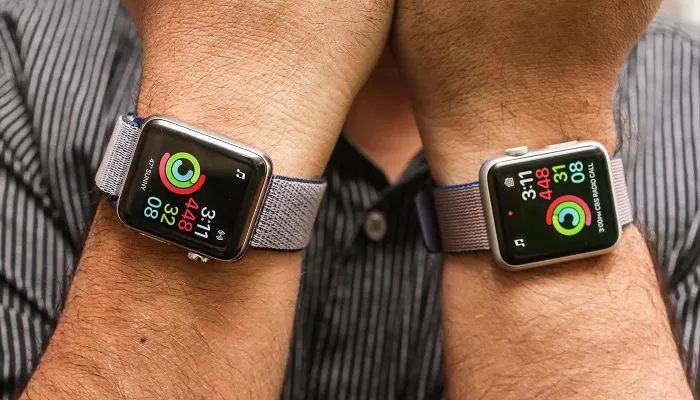The Apple Watch is not just a stylish accessory. It’s a powerful fitness tracker that helps you move more, sit less, and live a more active lifestyle. Whether you’re aiming for weight loss, muscle gain, or just better health, this device is your pocket-sized personal trainer.
How Exactly Should I Use My Apple Watch for Exercise?
To begin, pair your Apple Watch with your iPhone. Open the Apple Watch app on your phone. Go to “Health” and update your profile. Enter accurate details like height, weight, and age. This makes calorie and heart rate tracking more accurate. Then, go to “Workout” settings. Turn on “Start Workout Reminder” and “End Workout Reminder” so your watch nudges you to stay active.
Customizing Workout Views
Open the Workout app. Tap the three dots beside any workout type. Tap “Edit Views.” Choose which metrics you want during a session. Most users select Duration, Heart Rate, and Calories. You can also add Elevation or Cadence for hiking and cycling.
Using the Activity Rings
Three colorful rings track your daily movement:
- Move Ring (red) – calories burned through activity
- Exercise Ring (green) – minutes of brisk activity
- Stand Ring (blue) – standing once per hour for at least 12 hours
Close these rings daily to maintain your streak. Set realistic goals. Begin with 300-400 Move calories and increase as you get fitter.
Using the Workout App Effectively
Tap the Workout app. Scroll through activity types—Outdoor Walk, HIIT, Dance, or Strength Training. Tap to begin. Swipe right to pause or end. Apple Watch automatically pauses when you stop moving. This keeps your data clean and accurate.
Tracking Different Workouts
Different exercises need different settings. For running, track pace and heart rate zones. For swimming, the Apple Watch is water-resistant and tracks laps. With strength training, track reps and rest intervals manually. For hiking, use elevation gain and heart rate to gauge intensity.
Using Third-Party Fitness Apps
Apps like Strava, Nike Training Club, and MyFitnessPal work seamlessly with your Apple Watch. These apps may provide advanced tracking, community features, and guided workouts. Sync them in the Health app to merge your data.
Apple Watch Features That Enhance Exercise
Heart Rate Monitoring
Heart rate tracking is one of the strongest features of the Apple Watch. During a workout, your heart rate tells you how hard you’re working. Your watch shows which heart rate zone you’re in—from fat-burning to peak performance.
VO2 Max and Cardio Fitness
Apple Watch estimates your VO2 Max—a key indicator of cardio fitness. Check this in the Health app under “Cardio Fitness.” A higher number means better endurance. Improve it with consistent aerobic training like running or cycling.
Sleep Tracking for Recovery
Fitness isn’t just about movement—it’s also about recovery. With sleep tracking, the Apple Watch helps you monitor how well your body recovers overnight. Better sleep boosts exercise performance and overall health.
Understanding Apple Watch Models for Fitness
Standard Apple Watch Series
The Apple Watch Series models are great for casual and moderate users. They offer most workout features, including heart rate tracking and GPS. They’re ideal for walking, gym workouts, and yoga.
Apple Watch Ultra for Serious Athletes
The Apple Watch Ultra is designed for endurance athletes, adventurers, and divers. It has better battery life, dual-frequency GPS, and a rugged design. It withstands extreme environments and gives accurate metrics even on mountainous terrain.
Evaluating Apple Watch Price
The Apple Watch Price varies by model and features. The Ultra is premium-priced, while older Series models offer great value. Choose based on your fitness needs and budget.
Tips to Get the Most Out of Your Fitness Watch
Enable Fitness Notifications
Enable reminders to stand, move, and breathe. These small nudges help break sedentary habits. You can customize notifications in the Watch app under Activity and Workout settings.
Use Apple Fitness+ for Guided Workouts
If you subscribe to Apple Fitness+, get guided video workouts right on your screen. Categories include strength, yoga, HIIT, and even mindfulness. Your metrics appear live during the video, enhancing the experience.
Calibrate Your Watch for Better Accuracy
To calibrate, take a 20-minute walk or run outdoors with GPS. This teaches the Watch your stride and pace. It improves distance, pace, and calorie estimates for future workouts.
Combining Apple Watch with Nutrition and Hydration
Track Calories with Third-Party Apps
Use apps like MyFitnessPal to log food and sync data with your watch. This helps you align exercise output with dietary input. It’s crucial for weight loss or muscle gain goals.
Stay Hydrated
Track water intake using hydration apps. You can log directly from your wrist. Proper hydration boosts energy and performance during workouts.
Real-World Use Cases
Training for a Marathon
Use the Apple Watch to follow a running plan. Monitor pace and distance with GPS. Use heart rate zones for effective training. Recovery data from sleep and heart rate variability helps you avoid overtraining.
Gym Workouts
Track different strength sets and rest periods. Use the timer function. Measure active calories and heart rate to keep workouts efficient.
Outdoor Hiking
Apple Watch Ultra is ideal for hiking. Use GPS and Compass Waypoints. Track elevation gain and heart rate to understand effort. Mark trailhead locations and use the Backtrack feature for safety.
Apple Watch as a Lifestyle Tool
Mindfulness and Stress Management
Use the Breathe app or Mindfulness feature. These help reduce stress and improve focus. A calm mind enhances workout performance and recovery.
Health Integration
The Watch integrates with the Health app, providing a full snapshot of your wellness. You can view trends, share data with your doctor, and spot early health issues.
Conclusion
The Apple Watch is more than a tracker. It’s a coach, motivator, and health monitor in one. Whether you’re just starting or you’re a fitness veteran, this tool adapts to your journey. With consistent use, it helps you live better, move more, and perform stronger.
Related Topics:

